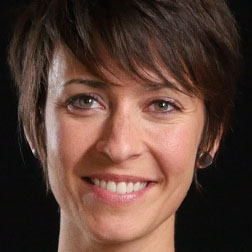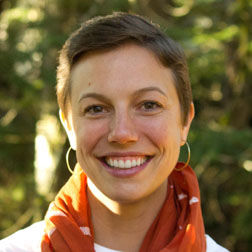In my work as an Agile ”Scrum Master” and Team Coach, I’m often confronted with the problem of how to spice up routine technical meetings and create genuine engagement among team members.
Although there are very good reasons why the Agile/Scrum framework encourages routine meetings, the “shadow” aspect of everyday meetings is an all-too-familiar experience that may appear in a variety of different forms:
- Resistance to the meeting itself “Not another one!”
- Boredom “Let’s get through with it.”
- Participants easily distracted “This conversation doesn’t concern me, there’s so much I should be doing instead of this.”
- No coherence at beginning — joking around, not starting on time, etc.
- Same activity or discussion repeating itself over and over.
- Less and less attention to structure and preparation “We know what to expect of the meeting and how to do it, we can just show up and start right away.”
- Not a lot of listening, thinking about what I’ll say instead of listening.
- Being physically present and mentally absent (vs being fully present and engaged).
- The Scrum Master does the meeting by himself “It’s YOUR meeting anyway!”
- Monologues take us away from priority subjects.
As a Scrum Master, one of my goals is to help the team self-organize and take ownership of every part of their work. Keeping that in mind, here are a few things I’ve learned as an Integral Facilitator that I use to bring a bit of “magic” into these meetings.
Bring the group together
It’s important to mark the start of the meeting with some sort of signal to bring everybody onto the same page in a quick and fun way. The magic happens when you find an inside joke with the team and turn it into something meaningful. For example, in one of the teams I coach, we mark the start of a meeting by giving the pen to the last person to arrive. It brings people together, it’s simple and it’s also a small incentive to be on time! Figuring out small, culturally appropriate ways to mark start and end times can seem like a small detail, but it paves the way for a more meaningful and effective conversation by bringing the group together.
Use the group’s intention to build coherence
I used to start meetings by reminding everyone of the meeting objectives. But because these often stay the same from one meeting to the next, I noticed it didn’t create the cohesion and focus I was hoping for.
Now, I’ve started to ask participants to express their intention in a precise and concise way instead. Not only does it involve every participant right at the beginning but it also allows them to express themselves in a slightly deeper way than usual. In addition, it creates proximity and introduces variety because intentions can change meeting to meeting. Making room to voice new intentions at each meeting allows us to better formulate the group’s intention (a “why”) in a more meaningful way.
Play with structure
I’m often confronted with seemingly “chaotic” meeting practices where it looks like there’s no structure at all. So historically, I’ve failed to recognize the existing (but sometimes very subtle!) structure and respond with a “the more the better” attitude.
Now that I have experienced firsthand the value of subtle structures that are always at play in groups, I pay more attention to these silent structures. Sometimes I ask the team to name our structure and to identify the patterns that are working us and shaping our structure. I then invite them to take some ownership of the structure and to decide together what is the right amount and type to best support our objectives.
For some groups, it might be a fixed, timed and precise agenda, while for other teams just having a simple set of ground rules is enough to get things moving. In several cases it’s been helpful to point out the polarity of Efficiency—Creativity with a team to help us identify a structure that will allow us to achieve our goals, while still giving enough space to emerging ideas and discussions.
Work with energy and flow
One of the key components of my training as an Integral Facilitator was learning how to pay attention to the energy level and learn to influence it it in service of the group. While it’s challenging to map all the ways group energy shifts and changes during a meeting, there are a few “tools” I now use in every meeting.
Frequently during a meeting, I ask myself (inwardly) what type of energy I’m noticing in the group and what type we might need (creative, convergent, sharing, compassionate, etc.). This perceptual practice helps me to respond in a more adequate way, rather than just favoring an emphasis on “efficiency and focus.”
Since the issue we most often face in routine operational meetings is simply a lack of energy, I often use tools to raise the energy in the room. For example, I have people vote on something, I emphasize a polarity in the group to spark a conversation, I challenge people to speak more from the heart, or I share a personal or funny anecdote of my own. All of these are different behaviors that might take us away from the core subject for a moment, but ultimately prove invaluable by raising the energy level in the group. When a group’s energy is sub-optimally low or high, efficiency will suffer.
Be curious about group shadow
To avoid groupthink and move fluidly through a variety of perspectives (which is essential for good decision making), I’ve started to make room for shadow aspects of the group’s process at the end of some planning and review meetings. For instance, I usually start with a question “What are we missing, what are we not seeing?”
As the group’s perspective starts to expand into this question, I might follow it up with “What’s not being said?” or “Which voice haven’t we heard yet?” or “What’s being left out of our solution or plan?”
Recently I’ve asked a few teams what the voice of the skeptic would say if we gave it some airtime. One team has incorporated this practice as a time to “put our devil’s advocate hat on” as one of their routine processes. We usually come out of meetings like this with a better sense of completeness, a stronger respect for the intelligence of the “discordant” voices, and more open minds.
Continuous improvement
I think the key to better meetings is to pay the right amount of attention to format and to involve the team in its continuous improvement. A quick and easy-to-use tool for facilitating this is the Return On Time Invested (ROTI).
At the end of each meeting, we ask the team for a show of fingers to indicate how much they received from the time they invested in the meeting on a scale from 1 to 5 (highest=5). Everybody votes at the same time and we ask the votes under 5 to share what could have transformed their vote into a 5. In 3 to 5 minutes, we get a sense of how the meeting went for everyone and a few pointers on how to improve the next one. Plus, everyone likes to give feedback!
The numerous meetings within an Agile process offer a fantastic opportunity for Scrum Masters and coaches to be creative with their facilitation practice. And working with the same team for a long period of time allows the space to try a lot of new things and to let the team take stronger ownership of their meetings’ process and outcomes. Since becoming certified as an Integral Facilitator, I’ve been bringing what I’ve learned in my training into the mix to make these meetings more energetic, efficient and useful—and with excellent results.
Simon L’Ecuyer
Certified Integral Facilitator
Master in Project Management, Certified Scrum Master, Pyxis


